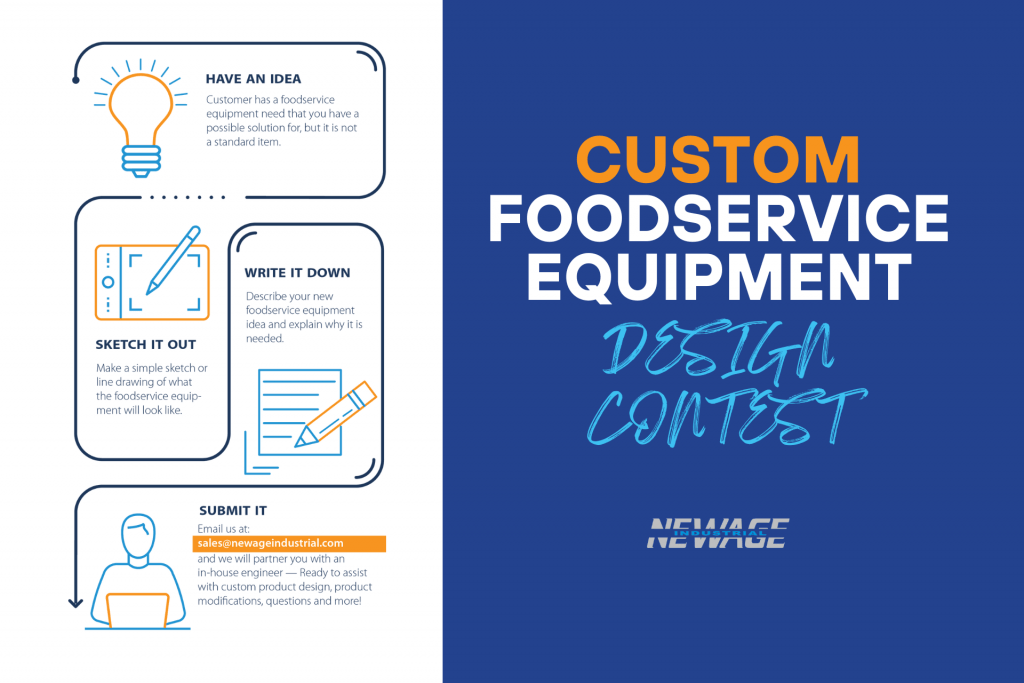
The number of children with food allergies is staggering. According to Food Allergy Resource & Education (FARE), there are close to six million children in the US with some sort of food allergy – roughly one in 13 children. On top of that, one in five children with food allergies (sometimes unknown until they have symptoms) have their reactions in school. Eight allergens have been identified as most common (and often most serious) – they are peanuts, tree nuts, soy, shellfish, fish, milk, eggs and wheat.
This poses new challenges for schools with a large food service component. Cafeterias that were once the fun, social part of school, have become dangerous for those children with life-threatening allergies. Parents and administration are worried about this rapidly rising issue, and because it’s a newer concern, best practice on how to handle everything from food preparation to lunchroom layout are not always well-defined.
Foodservice consultants and the school administration must adapt to a two-fold challenge: how do they design and manage spaces that are both allergen safe but also welcoming to all students?
Policies and procedures
Just the thought of dealing with this topic can be overwhelming given the fatal implications attached to it, but the very first thing school administrations should consider is putting a solid policy in place that is easy to follow for all people who come into contact with these students and food, including teachers, foodservice workers and volunteers.
John Turenne FCSI, president of Sustainable Food Systems, LLC has been involved in creating policies for various schools. “Writing a step-by-step policy is imperative so that everyone – whether a dishwasher or foodservice director, and everyone in between – understands the severity,” he says. “How to manage all the moving pieces whether it’s segregation of equipment or food, managing cross contamination, etc.”
He suggests in-service training on an annual basis, if not more often, to go over all the written policies and procedures.
Many schools, as part of their policies and procedures, provide rosters of students that have food allergies to the foodservice staff so they are easily identifiable. Ingredient lists are mandatory with the food, and many even hang posters in the kitchen to help foodservice staff learn how to identify particular allergens within a label.
“If a kid comes up to ask a question about a food allergen, we make it very clear who is responsible for answering that question so it’s not just someone who happens to be serving that says there are no nuts,” says Turenne.
Involving students, addressing individual needs Although policies are an imperative first step, James R. Baker, Jr., MD, CEO and CMO of FARE thinks it’s also important to take into account that all of these students don’t have the same allergies, or same severity. “The needs of individual students are evaluated, in terms of their allergies or any additional diagnoses that should be considered, as well as their age and maturity level,” he says.
For instance, a kindergartener may not be able to read labels and requires more hand-holding, whereas high school students can often take on more responsibility themselves by asking the right questions or identifying potential threats in ingredients lists. “All of these factors, as well as the unique medical history of the student must be considered when designing accommodations and appropriate placement for the child,” Baker explains.
Executive chef Jason Hull who oversees the entire food program at Marin County Day school, a private K-8 school outside of San Francisco, does have general policies in place but he also tries to involve his students as much as possible. The school has the benefit of cooking from scratch at their on-site kitchen, allowing them, and their students, to really understand the ingredients in their food. They put up colorful signs with both icons and words that kids can read. “A big part of dealing with this is through education.
We want to teach kids how to navigate the lunchroom,” says Hull. “We are in constant communication with families, but by teaching these kids how to navigate a place that may have allergens and teaching them what questions to ask, we are better preparing them for the real world.”
Part of this education is also teaching these lessons within the classroom. This helps take out some of the social stigma that is often associated with food allergies, which can lead to bullying. “If we start this education at a young age, people want to support their friends,” says Hull. Much of this education focuses on learning not to share food and what cross contamination really means.
Design options
In addition to a written policy, the design of the kitchen and seating area within the cafeteria can have an impact on allergy management. In reality, not every school has the luxury of a redesign or even enough space.
This can be tricky, as it’s almost impossible to have a space that could avoid allergens during preparation. This is also not always the reality for those who outsource their food to a foodservice company. Turenne has seen some school kitchens sequester equipment and safe food ingredients to an different part of the kitchen so there is a lower risk for food contamination. This is ideal, but not always possible.
Universities are at the forefront of many of these foodservice design elements because at this stage parents are sending their children away and trusting the schools to handle food service for more than just a school day.
Much of what they’ve created will likely trickle down eventually into primary and secondary schools. Cornell University in Ithaca, New York has one dining hall that is completely gluten, peanut and tree nut free. They also offer peanut-free toasters in some of their other dining halls.
“Simple things such as listing ingredients and having proper labeling at stations can go a long way,” says Tara Bliss, FCSI associate and project manager for Brailsford & Dunlavey, Inc, who does a lot of consulting in higher education.
Other things she’s seen include self-serve “mindful” stations free of the big eight allergens, as well as pantries with gluten-free breads for those with allergies to help themselves. At Davidson College near Charlotte, North Carolina, students with allergies are invited into a section of the kitchen where allergen-free staples are stored.
Foodservice consultant Pamela Eaton FCSI of Beyond Green: Sustainable Green Partners has seen some schools add in a safety net that works best with “grab and go” foods. “When students go to the checkout they type in their student ID number, if they have an allergy, it pops up on the screen so the cashier can see if they are getting a PB&J and have a nut allergy,” she says. This particular school uses the program PrimeroEdge.
Many schools have made the decision to go completely nut free or have added in special tables for those who have allergies. Other schools have reversed that, putting those who choose to bring allergen food (most often peanut butter and jelly) at a separate table.
What if?
“The best policy in the world is only as good as human efficiency,” Turenne says. Even with all of the policies and safeguards put into place, schools need to be prepared that kids may still have a reaction and if that happens, everyone from the front line workers to the chefs need to know how to react.
“Although avoiding reactions is a priority, accidents can happen and teachers and administrators must be prepared to act in the event of a severe, anaphylactic reaction,” says Dr. Baker.
Learning how to use epinephrine injection (often referred to as an EpiPen or Auvi- Q) has become a reality for anyone who interacts with a student throughout the day – even in the lunchroom.
Although the prospect of this can be daunting and scary, it is something that needs to be on the radar for all foodservice consultants that work with schools with children of any age. Allergies are on the rise and figuring out a way to properly manage them throughout the education system may be the difference between life and death.
Samantha Lande
Picture: Gillian Blease/IKON Images




